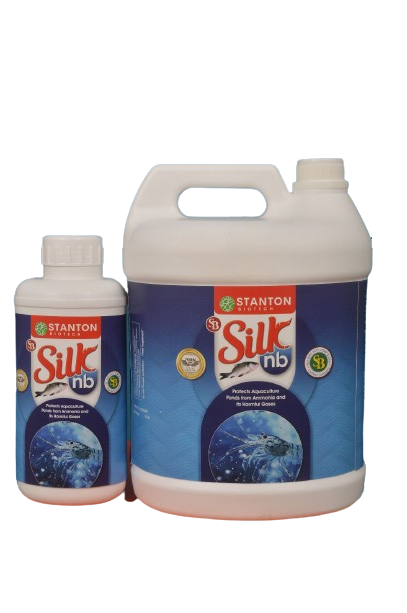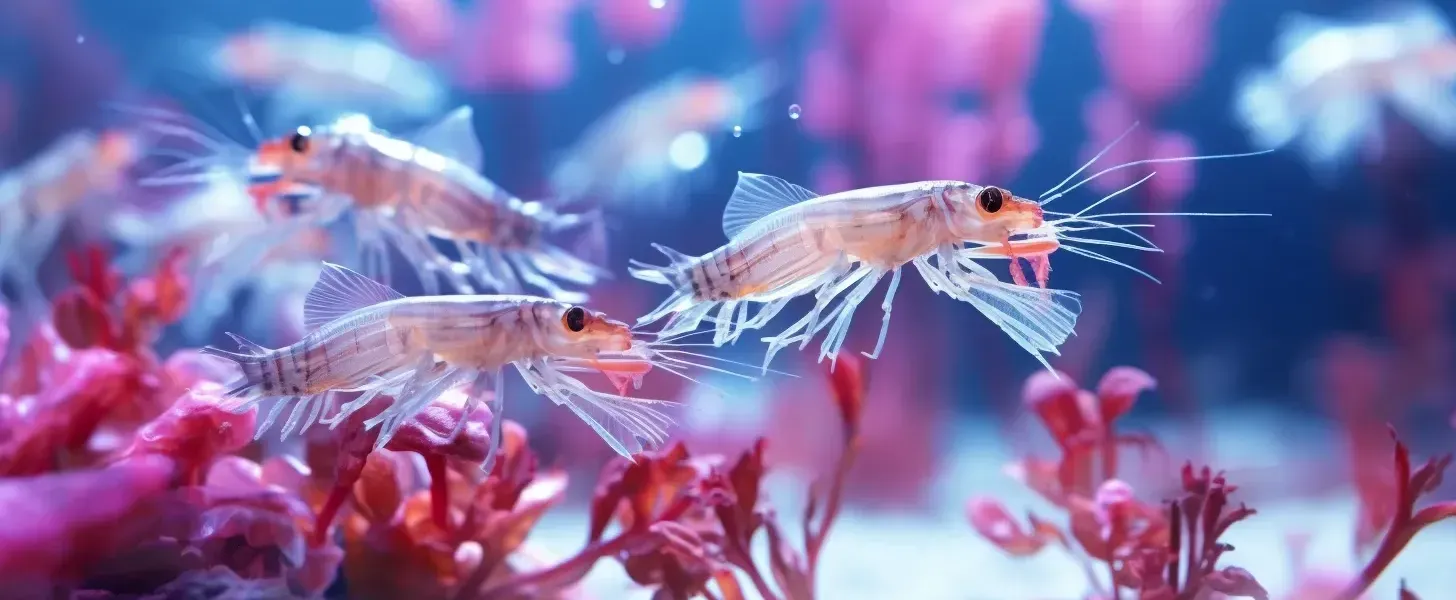SB-Silk NB
Enhancing feed intake boosts shrimp growth and acts as an immunostimulant.

What does SB-Silk NB do?
Managing nitrates and bacterial populations, along with controlling ammonia levels, is essential for maintaining healthy aquatic ecosystems. By regulating these factors, it's possible to sustain algae blooms and keep pH levels within optimal ranges, ensuring a balanced environment for aquatic life. Strategies for nitrate reduction include water changes and the use of specific filters, while bacterial load can be managed through biofiltration and regular tank maintenance. Controlling ammonia, a toxic byproduct of fish waste, involves efficient filtration systems and establishing a beneficial bacterial colony. Furthermore, maintaining algae blooms and pH levels requires careful monitoring and adjustments, such as using pH buffers and controlling light exposure. These measures collectively contribute to the health and stability of aquatic habitats, supporting vibrant ecosystems.
The Challenge
In aquaculture systems, maintaining water quality is crucial for the health and growth of aquatic organisms. High levels of nitrates and ammonia can be toxic to fish and shrimp, leading to stress, impaired growth, and increased mortality. Similarly, excessive bacterial load can result in disease outbreaks, further compromising the health of the stock. Moreover, fluctuations in pH levels and uncontrolled algal blooms can disrupt the delicate balance of aquatic ecosystems, affecting the availability of oxygen and essential nutrients. These issues pose significant challenges to aquaculturists, requiring precise management of water chemistry to ensure the viability of their operations.
The Solution
Addressing these challenges involves implementing integrated water management strategies that focus on controlling nitrates, ammonia levels, bacterial load, and maintaining optimal pH and bloom conditions. Biofiltration systems can be employed to naturally reduce ammonia to nitrites and then nitrates, using beneficial bacteria that thrive in these filters. Regular monitoring and adjusting of water parameters ensure that nitrates remain at safe levels, preventing toxicity. To control bacterial load, ultraviolet (UV) sterilization can be used to eliminate harmful pathogens without adding chemicals to the water. Additionally, managing feed input and waste efficiently reduces excess nutrients that contribute to undesirable algal blooms and ammonia production. Implementing aeration and circulation systems helps maintain stable pH levels and oxygenation, discouraging the proliferation of harmful algae while supporting beneficial phytoplankton growth. By adopting these comprehensive water quality management practices, aquaculture operations can create a healthier environment for aquatic organisms, leading to improved growth rates, reduced disease incidence, and enhanced overall production sustainability.
List of Services
-
BenefitsList Item 1
- Controlling nitrates and ammonia levels reduces the risk of toxic conditions that can stress or kill aquatic life. Lower bacterial loads decrease the likelihood of disease outbreaks.
- By managing the levels of nitrates, ammonia, and bacterial loads, water quality is significantly improved.
- Optimal water conditions, including the control of harmful chemicals and the maintenance of suitable pH levels, create an environment that supports faster growth rates and higher yields.
- Effective control over nitrates, ammonia, and bacterial loads can significantly reduce mortality rates within aquaculture systems.
- The combined effect of improved fish health, reduced mortality rates, and increased growth rates leads to greater economic efficiency for aquaculture operations.
- By maintaining blooms and regulating pH levels, aquaculture operations can achieve more sustainable practices. This includes minimizing the environmental impact of farming activities and ensuring the long-term viability of aquaculture ecosystems.
-
CompositionList Item 2
SB-Silk NB mineral composition for achieving such outcomes involves a mix of compounds that interact with nitrates, ammonia, bacteria, algae (blooms), and pH levels. Our product has a composition roughly as follows:
- Zeolite: A naturally occurring mineral that can absorb ammonia and heavy metals from water
- Sodium Thiosulfate: Used to neutralize chlorine and chloramine from tap water.
- Peat Moss: Used to lower the pH of water naturally, offering an acidic environment that some aquatic species require.
- Activated Carbon: Although not a mineral, activated carbon is used in water treatment to remove impurities.
- Limestone (Calcium Carbonate) and Crushed Coral: The minerals naturally buffer water, raising the pH and maintaining alkalinity, which is crucial for stable water conditions.
-
Dosage and UsageList Item 3
Dosage: - 1 Lt per Acre, Depends upon stocking density and average body weight. Available in 1 Lt and 5 Lts tins.
Usage: - Mixed with Water and Broad Cast Total pond.
-
Packing
1 Lt and 5 Lt Tin Packages, Liquid Form.
-
Storage and Caution
Keep in Cool and Dry Place
Presentation: - 1 Lt & 5 Lts

